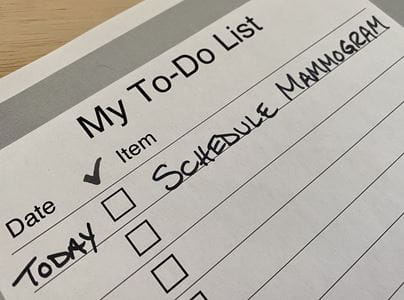Christina Griffiths is a media relations specialist for Indiana University School of Medicine and has worked with the office of strategic communications for five years. She wrote the following story about her experience learning she is at a high risk of developing breast cancer during her lifetime, and the increased screenings that began as a result.
When I was 12, my aunt was diagnosed with breast cancer. She was 41 years old at the time.
At that age, I didn't fully understand the gravity of the situation. I had heard of cancer and knew that it was serious. I knew that I had great-grandparents and a grandmother who had died from various other types of cancer. But until then, no one that close to me had experienced it, and I didn’t comprehend how hard it must have been for her until years later.
After chemotherapy, surgery, radiation and plenty of other medical tests and procedures, my aunt was, and still is, cancer free. As I entered adulthood, I was always advised to make sure I told my doctors that my aunt had breast cancer in her 40s and keep up with breast examinations. I thought that would be enough for most of my life.
But when I turned 30, my mother was diagnosed with breast cancer. Thankfully, her cancer was found early on a routine mammogram and she too is now cancer free. But her diagnosis meant that I now have yet another close family member with breast cancer, and at this point, more people in my family tree (going back several generations) have had cancer than haven't. So, I decided it was time to be more proactive about breast cancer screenings.
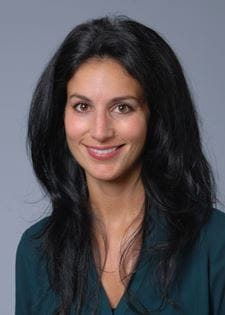 “There are several factors that can raise a red flag for me. If you tell me you have two or more people with cancer at a young age on one side of the family, and they are first or second degree relatives, then that is a concern. Certain cancers under the age of 50 in the family can also be a red flag. Then certain subtypes of cancer, like triple negative breast cancer or pancreatic cancer, can also give me pause,” said Nawal Kassem, MD, MS.
“There are several factors that can raise a red flag for me. If you tell me you have two or more people with cancer at a young age on one side of the family, and they are first or second degree relatives, then that is a concern. Certain cancers under the age of 50 in the family can also be a red flag. Then certain subtypes of cancer, like triple negative breast cancer or pancreatic cancer, can also give me pause,” said Nawal Kassem, MD, MS.
Kassem is a breast oncologist and leads the Indiana University Health Cancer Prevention program at the IU Melvin and Bren Simon Comprehensive Cancer Center, which offers surveillance and management for patients who have a genetic predisposition for cancer. She is also an assistant professor of medicine at Indiana University School of Medicine. Her research focuses on improving outcomes for those at a higher risk of developing cancer.
“There's kind of a continuum, in terms of risks of cancers depending on the genetic mutation and the age of the person,” Kassem said. “There are other types of cancer that could be connected, especially for somebody with a hereditary cancer syndrome.”
Calculating your risk
I went through genetic counseling and testing and, thankfully, did not test positive for any currently known cancer gene mutations or syndromes. But because of my family history, I'm still considered at a 23% risk of getting breast cancer at some point in my life, which is considered higher than average.
For most people of average or low risk of breast cancer, the general screening guidelines have changed in recent years. Many providers, including Kassem, recommend starting yearly mammograms at age 40. In some cases, starting mammograms 10 years younger than the earliest breast cancer diagnosis in the family is also recommended. I was told to rotate mammograms and breast MRIs every six months starting now, in my early 30s—10 years before the age my aunt was diagnosed. Those with an even higher risk could be encouraged to do screenings even more often.
“If you have a first or second degree relative in your family who was diagnosed with breast cancer under the age of 50, I would suggest asking your provider if you are at a higher risk and whether you should be doing more, because we use that family history and the ages as a starting point to determine when you should start screening,” Kassem said.
One of those recommendations is breast self-examinations, or as Kassem prefers to call it, “breast self-awareness”.
“I tell all women to know your breasts. Know what they feel like. Know what they look like. Sometimes women find a cancer when they're showering, but it's not necessarily because they were doing self-exams. That’s just when they noticed something different,” Kassem said. “If you are at all noticing something different, like suddenly, the nipple is inverted and you've always had outward nipples, that could be a concern. Anything that's out of the norm, I would get checked out.”
Mammography vs. Magnetic Resonance Imaging (MRI)
So, let's say you have a higher-than-average risk of breast cancer and have received a personalized screening recommendation that includes mammograms and MRI’s on a particular schedule. For me, my first questions were: do I really have to do both, and do I really have to do them this often, at this age? The short answer is yes, partially because both imaging techniques are different, with their own advantages and disadvantages.
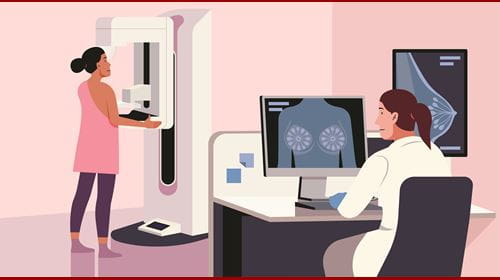
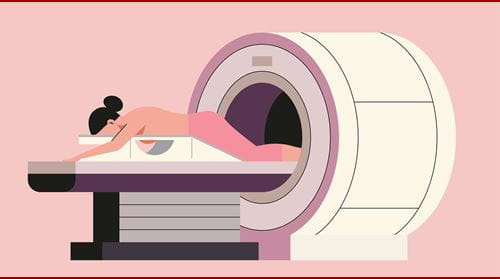
Many women, especially those younger than 45, have dense breast tissue. This means they don't have as much fatty tissue, making it even harder to detect cancer in imaging because of how dense the tissue is. On a mammogram, which uses plates to compress the breast, that tissue is pushed even closer together.
“Squishing that breast together makes it very hard to see inside. For women who have very dense breasts, an MRI can be helpful in distinguishing a mass from normal breast tissue because the images are essentially slices that get put together and then form the picture,” Kassem said. “For women who don't have as dense breasts, but they have a genetic predisposition, the addition of an MRI to a mammogram has also been shown to be beneficial.”
A mammogram is often a quick procedure, taking only a few minutes. An MRI takes a little bit longer, 20 to 40 minutes, depending on the number of images taken, and may require an IV contrast—a medication that can essentially attach itself to any potential abnormalities, highlighting them for the radiologist to more easily see.
Can I handle this?
As I learned more about the science behind mammograms and MRIs, I also began learning about a different type of risk—not just my calculated, scientific lifetime risk of getting breast cancer, but how much risk am I willing to take in my life when it comes to screening and testing for breast cancer? How often will my providers spot an abnormality? How often will it be recommended that I go through a biopsy procedure? Can I handle the stress of feeling like I'm under constant cancer surveillance, with frequent appointments and screenings? On the flip side, can I handle the stress of constantly wondering if I have a tumor growing in me right now and just don’t know it yet?
I'm not the only one with these types of questions. Kassem has even had patients wonder if they should just get a preventive double mastectomy, which is a surgical procedure that removes the breasts, to diminish their risk and the need to worry as much about breast cancer at all. But with that comes a whole new series of questions and potential issues, like surgical complications, reconstruction issues, cost and even body image or mental health struggles.
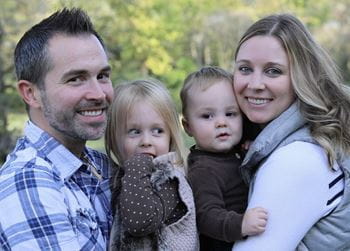
“There has to be a balance. It depends on the person, too,” Kassem said. “Typically, patients are encouraged to start with surveillance and are made aware of the potential false positives, where something concerning is seen on imaging but workup does not reveal cancer, and if it becomes too overwhelming, then we will regroup.”
Doing increased screenings for any type of cancer can quickly feel overwhelming. Especially for people like me, who keep busy with two young kids, a full-time job and too many hobbies. But then I remember how important my health is to my family as much as theirs is to me, and it’s easier to make these potentially life-saving screenings a priority.
“I’ve had those patients who are like, ‘I don't have time for all this.’ Patients are busy, but prioritizing your health is also important,” Kassem said. “I think an honest conversation with provider and patient goes a long way. I really do.”
What you can do
Kassem suggests you talk with your primary care provider or visit a cancer prevention provider if you have one or more of the following:
- Themselves diagnosed with any cancer at age 50 or younger
- Relatives of any age diagnosed with ovarian, pancreatic or male breast cancers
- Have at least 2 relatives (mother, father, aunts/uncles, siblings, children) on the same side of the family with breast, colon, endometrial or kidney cancers
- A first or second degree relative who has tested positive for a genetic cancer mutation
To limit your risk of breast and other cancers, there are certain lifestyle factors that could help, such as:
- Maintain a healthy body mass index (BMI)
- Limit alcohol intake
- Exercise with a goal of 30 minutes at least 4 days a week
- Keep up with your cancer screening recommended by your primary care provider, including colonoscopies and mammograms
Learn more about breast cancer research at IU School of Medicine and the IU Simon Comprehensive Cancer Center.




